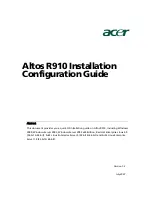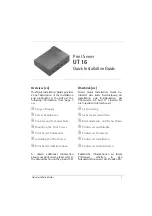
139
IGEL
Technology GmbH
IGEL Zero HDX
5.09.100
If the smartcard is merely used to control access to the terminal, the procedure is as follows:
Insert a suitable smartcard.
1.
Click on
Write to Card
in order to write the data to the card.
2.
Remove the smartcard once the writing operation is complete.
3.
You can now program the next smartcard.
Save Sessions
Saving sessions on the smartcard
If an employee uses a number of different terminals or the terminals are used by many different
employees, it may be a good idea to save the sessions used by an employee on his smartcard instead of on
the terminal. In this way, the user only needs to call up the applications he requires in order to perform his
duties.
The procedure for saving sessions on the smartcard is as follows:
Insert the employee's smartcard into the terminal.
1.
The applications used by the employee are shown on the terminal.
Create the sessions you would like to add to the smartcard on the terminal (including an autostart
2.
option and personalization of login information).On addition to the first name/surname of the card user
and an optional password, you can also add to the smartcard the sessions shown in the Available
Sessions area.
Once you have added all the required sessions, click on
Write to Card
in order to save the data on the
3.
smartcard.
Test Smartcard
Test the card you have created.
After performing a warm start and inserting the smartcard, the sessions will be shown immediately on the
desktop. Every session which is set to start automatically when you insert the smartcard will be launched.
10.2.2.
AD/Kerberos
Menu path:
Setup > Devices > Security > Logon > Active Directory / Kerberos
These setup pages allow you to enable local login to the thin client via the Kerberos protocol.
AD/Kerberos must also be
configured
(page
140
) for this purpose.
















































